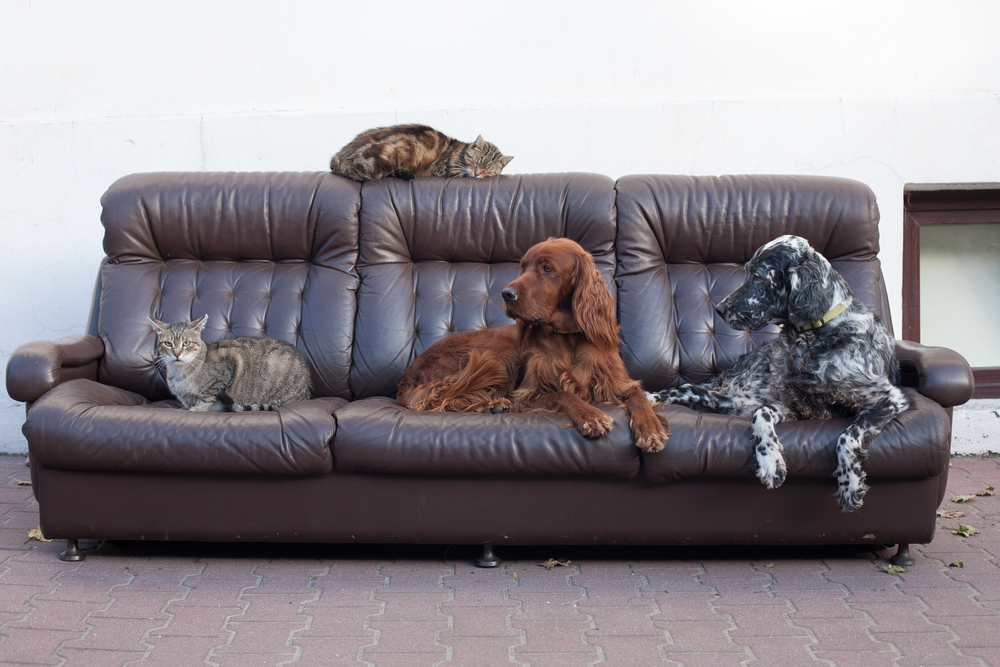Lots of factors set millennials apart from previous generations. For starters, they like to share things like houses and apartments. They are also adopting pets as family members before considering marriage and human children. This means that several pets can find themselves co-habiting too. Here’s what to consider to ensure that individual pets get along under one roof and are not stressed by this co-sharing living arrangement.
When 26-year-old Ed decided he wanted to adopt a dog, one of his millennial housemates already had a cat. Charlie had been adopted as a kitten and hadn’t lived with any other pets and thus considered the home to be his territory.
At the shelter, Ed had fallen in love with a bouncy mutt of indistinguishable heritage. Aware that Charlie was already in residence and would need to be accepting of a dog, he asked shelter volunteers if he could take the dog through the cat section of the shelter to try and gauge her reactions to felines. The dog, whom he named Riley, simply walked through the cat quarters paying absolutely no attention to the feline inmates.
Back at the house, after initial sniffing, Riley ignored Charlie. Nevertheless, Ed supervised when the two were together in one room and confined Riley in his bedroom to nap if he had to go out until he was absolutely certain that they got along amicably.
By the time Bear, a lovable Labrador, moved in, Charlie was quite used to dogs and really didn’t mind his presence either, occasionally chasing him just to make sure he had gotten the memo that cats rule!
Proper Introductions
Whether it’s a millennial household or a traditional family set-up, it’s important to remember that new pets must be properly introduced to incumbent ones. It’s not a matter of letting them “sort it out.” That can be stressful to all the pets concerned and their pet parents if there is growling and hissing and it has the potential for real fights.
Millennial pets who cohabit should each have a place to call their own. That is probably their person’s bedroom or private area of the home. Cats also need vertical space where they can retreat if dogs in the home get too boisterous.
Meet and Greets
Behaviorists suggest introducing pets to one another by smell first. Confine the new pet to her room for the first week or so. That will allow pets to smell but not see each other. Help this virtual introduction along by taking a pair of socks and rubbing each pet with one. Then swap the socks so they can further become accustomed to each other’s scent before meeting in real life.
For first-time meetings, it’s important that dogs, no matter how seemingly friendly, be on leash to prevent any lunges at a newcomer. When introducing a dog into a feline household, be sure you understand the dog’s prey drive. A dog with a high prey drive, especially toward small animals, may never be a good fit for a home with cats. That millennial pet parent may have to consider moving somewhere else.
Always be cautious when introducing animals of different sizes, and remember that any animal has the potential to kill another, even accidentally. Careful supervision is a must until you are sure they have a friendly relationship.
Household Hints
For pets to cohabit well, feed them separately so there is no food stealing. This is where pet technology can be useful. Investing in a food bowl designated to a particular pet via a microchip or tag means that other pets in the household will not be able to access the food. It’s a worthwhile investment, especially for technology-loving millennials. Having several water bowls around the home is a good idea too.
Finally, when it comes to sharing a home, it’s also a good idea for individual millennial pet parents to have an understanding between themselves to care for each other’s animal companions if someone has to work late or travel. This is less stressful on pets than being uprooted and going to stay somewhere else. They are always happiest in their own environment.
This article was reviewed/edited by board-certified veterinary behaviorist Dr. Kenneth Martin and/or veterinary technician specialist in behavior Debbie Martin, LVT.








